Anaheim Peppers
The Anaheim pepper is a mildly spicy chile that enhances many Mexican and Tex-Mex dishes. Learn everything you need to know about this pepper, including its flavor and heat profile, health benefits, and mouthwatering recipe ideas.

What are Anaheim peppers?
Anaheim peppers, named after the city in California, are said to have been created by Emilio Ortega, a New Mexico farmer. In a stroke of horticultural brilliance, he transplanted Hatch chile seeds (or New Mexico chiles) to the fertile soils of California.
The seeds changed in this new environment, resulting in a slightly different variety. Despite bearing a striking resemblance to their Hatch counterparts, Anaheim peppers have a unique flavor profile. This is attributed mainly to the variations in the soil compositions between their native and transplanted locations. Pretty cool, right?
Anaheim peppers are medium in size, typically reaching a length of 6 to 10 inches. They’re sold and cooked when green, although they will turn red as they ripen.
In fact, when Anaheim peppers turn fully red, they are dried to become chile seco del Norte or chile Colorado (much like poblano peppers becoming ancho chiles).
Flavor profile
Anaheim peppers have a mild, slightly sweet flavor with a hint of crispness in their raw form. Once roasted (which is common), the taste becomes much sweeter and smokier.
Roasting also softens their texture, making them ideal for stuffing, blending into sauces, or adding to stews for a mild but distinct pepper flavor.
They’re less spicy than many other chile varieties, so they’re a great way to add flavor to Mexican and Southwestern dishes without imparting an overwhelming heat.
Spice level
Anaheim peppers are relatively mild in terms of spice. They typically range from 500 to 2,500 Scoville Heat Units (SHU) on the Scoville scale, which measures the spiciness of chile peppers. For reference, they’re about 5-16x milder than jalapeno peppers and 20-46x milder than serrano peppers.
Their heat level can vary depending on the growing conditions and the pepper’s maturity, but overall, they are a great choice if you prefer a milder, more subtle heat in your dishes.

Health benefits
Anaheim peppers are low in calories, high in fiber, and nutrient-dense. They contain high amounts of vitamins C, K, A, and pyridoxine (vitamin B6).
Not only that, Anaheim peppers are filled with a compound called capsaicin. Capsaicin is what puts the ‘spice’ in spicy pepper, but it’s also proven to be a potent anti-inflammatory, promoting heart health.
Cooking with Anaheim peppers
Preparing Anaheim peppers differently can introduce exciting new flavors into your favorite recipes. Try roasting them at 400 degrees Fahrenheit or directly on a grill over medium-high heat until their skin is charred and blistered for a smoky, sweet flavor.
You can briefly blanch Anaheim peppers in boiling water, then shock them in ice water to retain their bright color and make them easier to peel. You can also slice and sauté them with onions, garlic, or other vegetables for a quick and flavorful side dish.
Just like poblano peppers, Anaheim peppers are perfect for stuffing. Fill them with grains, veggies, or plant-based cheese and bake them until the peppers are tender. You can even pickle Anaheim peppers in vinegar, water, sugar, and salt brine.
Remember, when handling Anaheim peppers, it’s a good idea to wear gloves to avoid irritation from the capsaicin, especially if you’re sensitive to it.
Recipes
Many regions across Mexico and the Southwest utilize Anaheim peppers for their mild spice and tasty flavor profile. They also make a delicious replacement for poblano peppers in recipes like these:
Storing
Anaheim peppers can be stored at room temperature in a pantry for about 4 days. If you know you’ll use them within a few days, I suggest keeping them at room temperature.
Raw Anaheim peppers will stay fresh for about 1-2 weeks in your fridge. Just remember to keep them in the crisper drawer. If you roast them, store them in an airtight container in the fridge for up to 3-4 days.
If you have too many to eat, raw or roasted Anaheim peppers can be frozen for up to 6 months in a freezer-safe bag or container.
Buying guide
Choose Anaheim peppers that are firm, glossy, and evenly colored. The skin should be tight and unwrinkled and shouldn’t give under pressure. If the peppers have thin tan lines on them, that’s okay! These lines mean the plant was under more stress as it was growing, and the pepper is typically sweeter and spicier.
Anaheim peppers are usually available in the produce section of larger grocery stores. You can also look for fresh, locally grown Anaheim peppers at farmers’ markets.
For anyone with a green thumb, try growing Anaheim peppers at home! You can find seeds or starter plants at nurseries, garden centers, or online seed retailers.

Substitutions
If you can’t find Anaheim peppers, two other varieties work well as substitutions:
- Poblano peppers: Although slightly spicier than Anaheim peppers, poblano peppers have a similar flavor profile, making them an excellent replacement.
- Green bell peppers: With a more garden-fresh flavor and less complexity, green bell peppers are the next-best choice if you can’t find Anaheims or poblanos.
Frequently asked questions
Anaheim peppers are different from Hatch peppers. When the Hatch chile was transplanted to California, it became the Anaheim chile. Due to the differences in soil, Hatch peppers are much hotter and have a slightly different taste.
Yes and no. When Anaheim peppers are grown in New Mexico, they are referred to as New Mexico peppers or Hatch peppers. New Mexico peppers are much hotter than Anaheim peppers.
When Anaheim chiles are ripened, picked, and dried, they are called chile Colorado or chile seco del Norte.
They thrive in well-draining soil with a pH between 6.2 and 7.0. They require full sun, meaning at least 6-8 hours of direct sunlight daily. Plant them about 18-24 inches apart to allow for ample growth and air circulation, and keep the soil consistently moist but not waterlogged to prevent root diseases.
More Mexican chiles
If you’re interested in learning about more popular chiles used in Mexican cooking, check out our other detailed guides:
Note: I’ve updated this post to include new information and helpful tips.
Mitch Chapman is a food writer, photographer, and one of the founders of Broke Bank Vegan. With a background in healthcare and the restaurant industry, he has a passion for sharing healthy yet flavorful plant-based food.

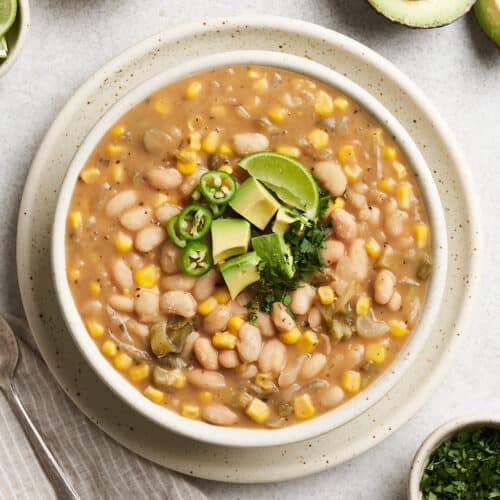

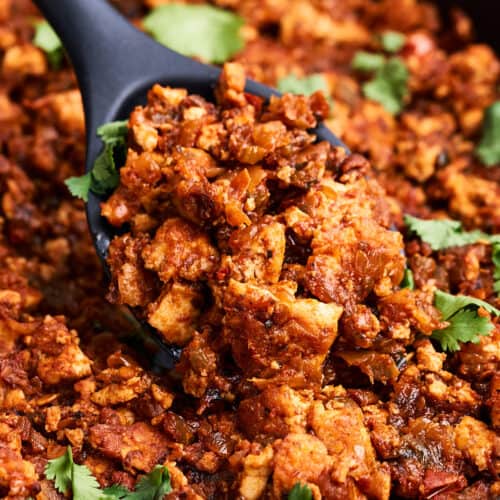
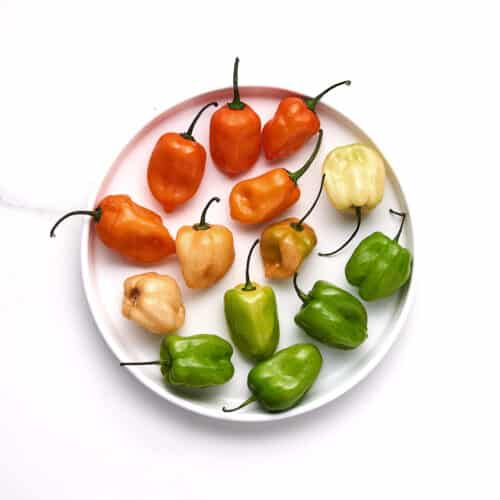

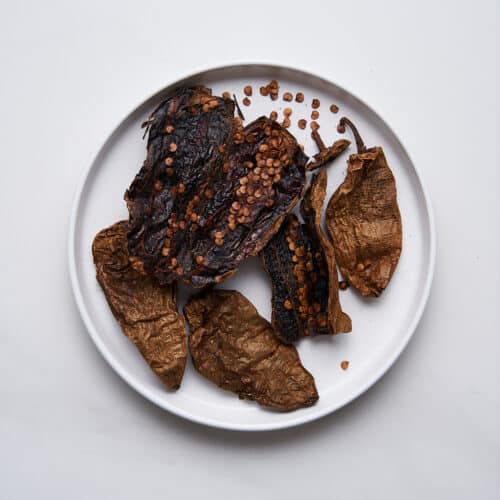

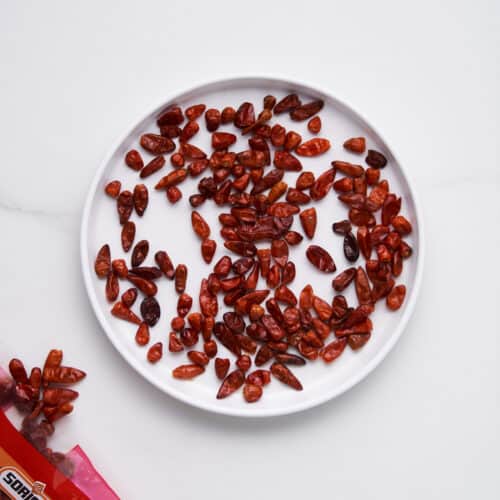


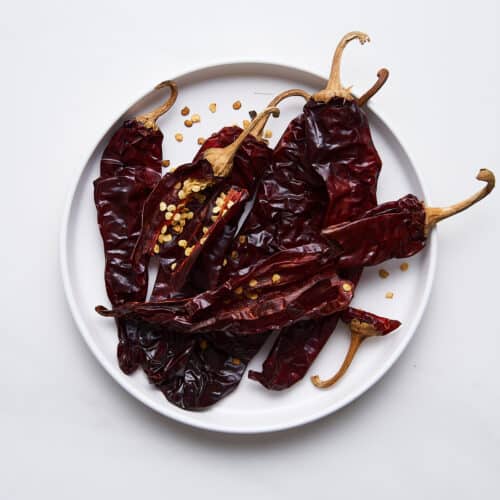

Thanks for the Annaheim pepper and vegan.
Hi Yvonne,
You are so welcome!